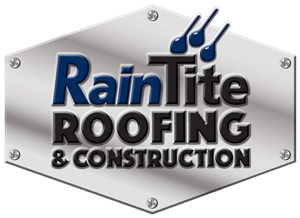Roofing ventilation plays a critical role in maintaining the comfort, energy efficiency, and longevity of your home. Poor ventilation can lead to numerous issues, such as excess moisture, mold growth, and increased energy costs. An optimized ventilation system not only enhances your home’s indoor air quality but can also prolong the life of your roofing materials. In this comprehensive guide, we will explore the importance of roofing ventilation, introduce various types of ventilation systems, and outline best practices to ensure the ideal balance between indoor and outdoor air exchange.
Rapid City homeowners understand the value of an efficient and well-ventilated home, which is essential to combating the seasonal temperature fluctuations. By familiarizing yourself with the critical aspects of roofing ventilation, you can ensure your home remains comfortable and efficient year-round, preserving the structural integrity of your roofing system.
Importance of Roofing Ventilation: Indoor Air Quality, Energy Efficiency, and Lifespan
Proper roofing ventilation plays a pivotal role in maintaining your home’s overall health. Here are the key benefits of an effective ventilation system:
1. Indoor air quality: A well-ventilated roof promotes consistent air exchange, reducing indoor pollution and ensuring a healthier living environment.
2. Energy efficiency: Proper ventilation helps regulate indoor temperatures, reducing the need for heating and cooling systems, and ultimately lowering energy costs.
3. Roofing lifespan: Optimal ventilation can prevent excess moisture and heat buildup, protecting your roofing materials from premature deterioration and prolonging their life.
The Consequences of Poor Roofing Ventilation
Inadequate roofing ventilation can lead to a myriad of issues that threaten your home’s integrity, comfort, and energy efficiency. Some common consequences include:
1. Excess moisture: Poor ventilation can result in moisture buildup, promoting mold, mildew, and rotting of your home’s wooden structural components.
2. Attic heat buildup: Overheated attics can cause roofing shingles to deteriorate over time and contribute to higher cooling costs during warmer months.
3. Ice dams: In winter, insufficient ventilation can lead to ice dams forming on the edges of your roof, causing potential leaks and structural damage.
4. Higher energy costs: A poorly ventilated home can require more energy to maintain comfortable indoor temperatures, increasing energy bills in the process.
To protect your home and avoid these issues, it’s essential to have a properly designed and maintained roofing ventilation system.
Types of Roofing Ventilation Systems
There are various ventilation systems available, each with its unique features and benefits. Here’s an overview of some common types:
1. Ridge vents: These low-profile vents run along the peak of the roof, allowing hot air to escape while blending seamlessly with your roof’s design.
2. Soffit vents: Installed in the eaves of your roof, soffit vents provide essential air intake to facilitate proper airflow and temperature regulation in your attic.
3. Gable vents: Designed for installation on the gable ends of your roof, these vents expel hot air and help maintain balance in your roof’s ventilation system.
4. Turbine vents: Utilizing wind power, these spinning vents draw hot air from your attic, offering an energy-efficient ventilation option.
In addition to these primary vent types, there are intake vents (for bringing fresh air into the attic) and exhaust vents (for releasing hot or moist air). An ideal ventilation system achieves a balance between these vent types, maximizing air exchange efficiency.
Ventilation Best Practices for Optimal Home Comfort and Efficiency
To keep your home comfortable, efficient, and well-protected, follow these expert-recommended best practices for your roofing ventilation system:
1. Insulation integrity: Provide adequate insulation in your attic to ensure heat transfer is minimized between the living space and the attic, promoting energy efficiency.
2. Air seal: Seal any air gaps and openings around pipes, ducts, and wiring that penetrate the attic floor, helping maintain optimal indoor air quality and energy efficiency.
3. Balance air intake and exhaust: Ensure your ventilation system is balanced, with equal amounts of intake and exhaust vents, to promote proper air circulation throughout your attic.
4. Proper vent placement: Locate vents in strategic locations to optimize airflow and avoid creating hotspots or stagnant air pockets in your attic.
5. Regular inspections and maintenance: Schedule routine inspections to identify and address any issues early, maintaining your ventilation system’s effectiveness and prolonging its lifespan.
Signs You May Have Inadequate Roofing Ventilation
Recognizing the signs of a poorly ventilated roof is essential to safeguard your home’s integrity and comfort. Beware of the following red flags:
1. High indoor humidity: An excessively damp or musty indoor environment could signal inadequate ventilation.
2. Warped or cracked roof shingles: Visible damage to your shingles may point to trapped heat and moisture caused by poor ventilation.
3. Frequent ice dam formation: Persistent ice dams during winter can indicate a ventilation issue and the need for potential upgrades.
4. Mold or mildew in your attic: The presence of mold or mildew in your attic is a clear sign of insufficient airflow and moisture control.
If you observe any of these warning signs, consult with a roofing professional to evaluate your existing ventilation system and determine necessary improvements.
Final Thoughts
Proper roofing ventilation is essential for maintaining your home’s indoor air quality, energy efficiency, and the lifespan of your roofing materials. By understanding the importance of ventilation, exploring various systems, and following best practices, you can ensure your home remains comfortable and protected year-round.
Trust Rapid City’s Roofing Company of Choice for all your roofing ventilation needs. Click here to schedule your free, no-obligation consultation, and let our experienced roofing contractors assess your home’s ventilation system and recommend the best solutions for optimal comfort and efficiency!

